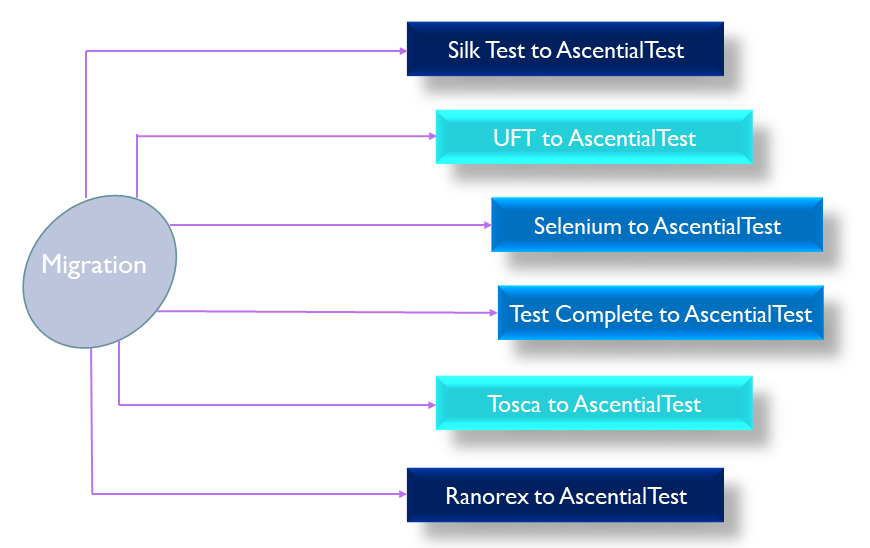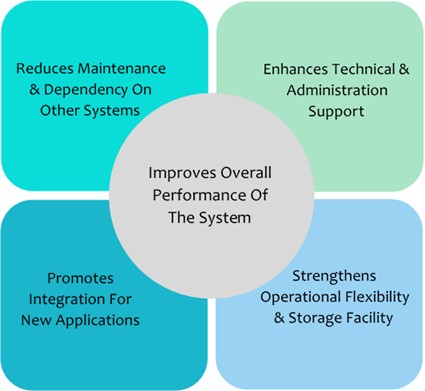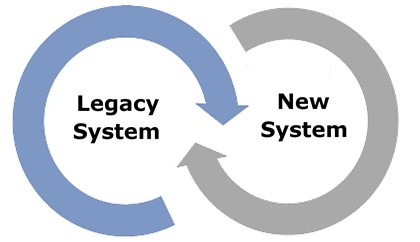Functional Automation Tool Migration
Migration of Test Automation Tools
Migration of Test Automation Projects refers to the process of transferring or moving existing test automation projects from one automation tool to another. This can transpire for a multitude of factors., such as framework failure or application controls not supported or execution performance is slower, regression maintenance cost/effort is high, or the migration of the application to a new technology has become necessary due to the current tool’s lack of support or the discontinuation of application support by the current tool.
Modernizing The Legacy System
Modernizing a legacy system in test automation involves updating and enhancing the existing test automation practices to align with current industry standards, technologies, and best practices. Legacy systems often have outdated testing methodologies, tools, and frameworks, which can lead to inefficiencies and maintenance challenges.
Testing tools have become an essential component of software testing, aiming to streamline testers’ tasks, save time, effort, and costs, while enhancing the overall quality of testing activities. Nevertheless, legacy software poses challenges such as lack of support, high maintenance requirements, operational expenses, scarcity of expertise, and difficulties in integrating with other software development tools, prompting testing organizations to consider migrating to alternative tools that better cater to their evolving needs.
Why Tool Migration
Testing Tools are becoming an integral part of software testing and are meant to ease testers work and provide them with time, effort, cost saving including quality of the testing activities. However, problems with legacy software like, Lack of support, Excessive maintenance, Operational costs, Shortage of expertise, Integration with other software development tools are piling up with advancement in technology. It is highly important for testing organizations to switch or migrate to other alternative tools to meet their extended requirements.
Automation testing in migration, whether from legacy systems to new systems or from one tool to another, is perceived as high-risk in the IT industry. The complexity of the task increases the likelihood of failure to meet business expectations, with frameworks prone to collapse or the entire automation project being abandoned for valid reasons. However, with careful management of the object repository and effective use of advanced methodologies, it is indeed possible to successfully migrate the existing test automation project within the scheduled timeframe.
Matryxsoft Tech Overview
Our primary goal is to establish a high-performing Testing Centre of Excellence, where we strive for originality and embrace innovative ideas. We utilize various techniques and procedures to continuously enhance our solutions until our clients are completely satisfied with the results
- Enhanced Performance: Migrating to newer or more advanced tools can lead to improved performance and efficiency. Newer tools often come with updated features, better optimization, and increased capabilities, leading to faster and more reliable results.
- Cost Savings: Migrating projects to new tools can help reduce development and maintenance costs. Modern/New tools are often designed to be more cost-effective in terms of maintenance, licensing, and support. Additionally, they might require fewer resources to achieve the same outcomes in a short span within 3-6 months, resulting in greater cost savings.
- Increased Features: As technology evolves migrating to newer tools can provide better features and increases productivity.
- Scalability: Newer tools are usually designed with scalability in mind. They can accommodate the growth of your regression tests and handle larger suites without compromising performance.
- Compatibility and Integration with CI/CD: Migrating to modern tools can improve compatibility with other software Plugins. This can facilitate smoother CI/CD integration between different tools and technologies, leading to a more cohesive and efficient test execution.
- Access to New Features: Upgraded tools often introduce innovative features and functionalities that were not available in the existing tools. These new capabilities can enable users to achieve tasks that were previously impossible or required third-party solutions.
- Vendor Support: Existing tools might reach end-of-life, leading to discontinued vendor support and updates. Migrating to supported tools ensures that you receive ongoing assistance, bug fixes, and updates from the vendor.
- Future-Proofing: By staying up-to-date with the latest tools and technologies, you position yourself or your organization to remain competitive in the ever-changing digital landscape.

Conclusion!!!
In conclusion, migration of Test Automation Project from existing tool to a new tool can bring numerous benefits to the organizations. Upgrading to newer and more advanced tools can lead to enhanced performance, cost savings, increased security, scalability, better compatibility, and access to new features. Additionally, user-friendly interfaces, ongoing vendor support, improved collaboration, and future-proofing are among the advantages of tool migration.
Your entire automated test projects which took over 3-5 years (Approx) to build your regression suites can be migrated within *3-6 months based on the number of tests involved in the project which not only saves cost but also time and effort which cannot be valued as it helps you for a quick market release of the product. Think thrice before you change the automation tool to start again the existing project from scratch as migration is the best solution available.
However, successful migration of tests requires careful planning, thorough conversions of Object Repository, Functions, Data, Tests and Plans/Suites, and fixing of all syntax and runtime issues to ensure a smooth execution. It is essential to evaluate the specific needs and requirements of your organization before proceeding with the migration of automation project.
Ultimately, embracing migration of automation project as a strategic decision can empower you or your organization to stay competitive, adapt to technological advancements, and achieve higher levels of productivity and efficiency. By leveraging the advantages of tool migration, you can optimize your operations and position yourself for continued growth and success in the ever-evolving digital landscape.


